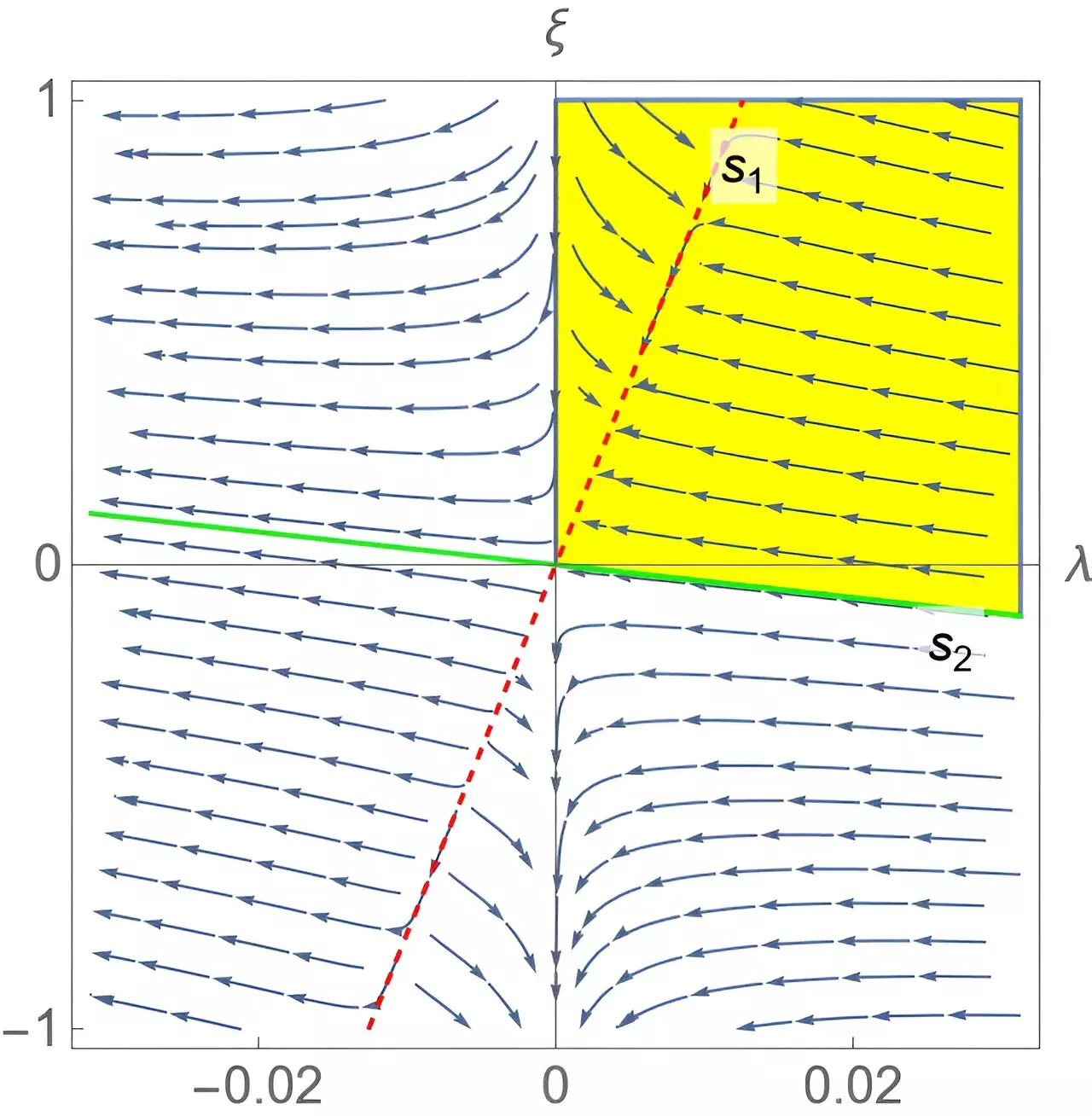Recent advancements in the realm of theoretical physics have set the stage for a more profound understanding of gravity, particularly through the lens of quadratic gravity. A joint research initiative involving scientists from the International School for Advanced Studies in Trieste, University of Massachusetts, and the Instituto de Física Teórica at Universidade Estadual Paulista in Brazil has culminated in new insights regarding the beta functions of couplings in this nuanced theory. Published in the prestigious *Physical Review Letters*, their findings could be pivotal for expanding our grasp of gravitational phenomena across various scales. This exciting new approach may not only amend previous misconceptions but also position quadratic gravity as a viable framework for describing the universe’s most complex forces.
Quadratic gravity represents an expansion of Einstein’s renowned general relativity by incorporating local quadratic curvature terms into the Einstein-Hilbert action. This intricate theoretical construct holds the potential for circumventing many limitations inherent in classical and quantum gravity. As John Donoghue, a key figure in the study, noted, quadratic gravity is recognized as a renormalizable quantum field theory, hinting at its ability to paint a broader picture of gravitational interactions. The research team’s commitment to understanding coupling constants in simpler models of physics laid the groundwork for their comprehensive inquiry into quadratic gravity’s unique characteristics.
The Significance of Beta Functions
The concept of the beta function serves as an essential tool in quantum field theory, acting as a bridge to understanding how coupling constants evolve across varying energy scales. Gabriel Menezes, another co-author of the study, emphasizes the critical nature of the beta function in studying the high-energy behaviors of gravitational theories. When analyzing quantum amplitudes, the notion of “running” coupling constants becomes significant, signifying how interactions diminish or amplify as energy fluctuates.
While numerous standard methodologies have emerged to chart the trajectory of coupling constants, quadratic gravity does not follow this predictably linear path. The team led by Donoghue and Menezes innovated new techniques to elucidate the running of couplings specifically within quadratic gravity, providing fresh perspectives that challenge established norms. This nuanced approach has revealed that instead of rampant instability, quadratic gravity may allow coupling constants to trend toward vanishingly small values at escalated energies, hinting at a behavior described as asymptotic freedom.
Pioneering New Horizons in Quantum Gravity
The implications of these findings are revolutionary. The research highlights that quadratic gravity can offer explanations for high-energy phenomena without leading to unstable particles, a common pitfall in many theoretical frameworks. Notably, the absence of tachyons—hypothetical particles that travel faster than light—in the context of their study is a significant relief for physicists. It suggests a pathway wherein quadratic gravity can serve as a holistic theory of quantum gravity, diminishing the inconsistencies that have long plagued the gravitational sector of physics.
Moreover, it is evident that this innovative work positions quadratic gravity within the larger tapestry of quantum field theories. As Donoghue remarks, there remain numerous peculiarities that warrant a deeper understanding. Through these investigations, scientists may elucidate many underlying principles that govern gravitational interactions.
Transforming the Future of Gravitational Physics
The foresight displayed by Donoghue and his team could act as a catalyst for an expanded exploration of gravitational theories. Their groundbreaking techniques pave the way for analyzing a broader array of gravitational phenomena and open doors to reinvigorated discussions surrounding the fabric of quantum gravity. As our understanding of high-energy behaviors and scattering amplitudes continues to evolve, it is plausible that their insights will catalyze significant breakthroughs in the field.
In the quest for a comprehensive quantum field theory of gravity, every contribution is invaluable. The research conducted by this ensemble of physicists serves as a reminder of the importance of fostering curiosity and pushing the boundaries of our scientific knowledge. By scrutinizing the intricacies of quadratic gravity, the scientific community may soon inch closer to unraveling the cosmos’s most profound gravitational secrets and contributing to an era of unrivaled discovery in physics.
The ambition to decode the complexities of gravity not only encapsulates the essence of scientific inquiry but also invites hope for a deeper comprehension of our universe. With the emergence of innovative methodologies and fresh perspectives, a new narrative in the history of gravitational physics is beginning to unfold, potentially reshaping our understanding of the cosmos for generations to come.


Leave a Reply